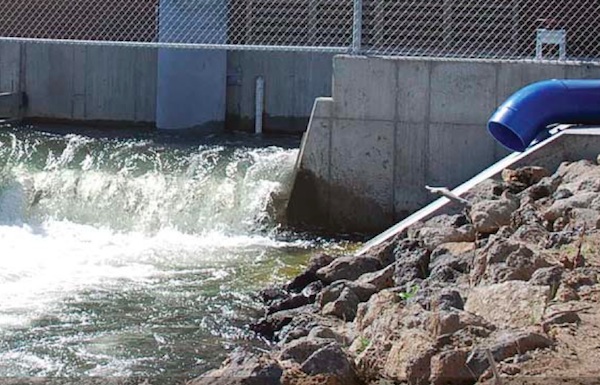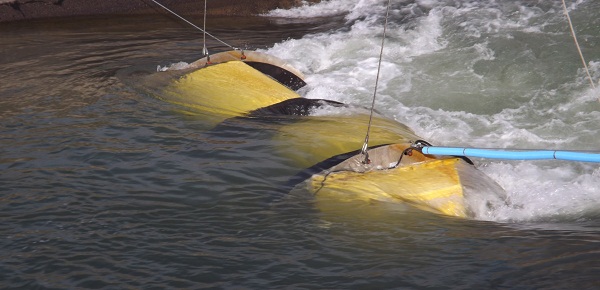Water that moves through waterways is a largely untapped source of micro hydropower. To assess that potential, the U.S. Department of the Interior’s Bureau of Reclamation has just completed a study [PDF] that assessed the prospects of water conduits that drop water more than five feet to add clean power to the grid.
What they found was that these various waterways have the potential to generate an extra 1.5 million megawatt-hours (MWh) of electricity every year, even while simply doing their “day job” as conduits for our water supplies.

“Hydropower is an important part of President Obama’s initiative to generate 80 percent of electricity in this country from a diverse set of clean energy sources by 2035,” Interior Secretary Ken Salazar said in a DOI press report. “Identifying and developing hydropower potential at existing facilities is one way we’re putting the all-of-the-above strategy to develop American energy sources into practice.”
Initially, as part of its work in upgrading or rehabilitating such sites, the Bureau of Reclamation identified sites at 191 existing federally owned existing hydropower generation that could be tapped for additional hydropower, to produce an additional 1.2 million MWh of electricity every year.
Some examples of the kinds of micro hydro devices that can be used in these kinds of municipal waterways include this kind of turbine from Seattle’s Hydrovolts, specifically designed to harness water in canals, or the VIVACE, which is designed to harness slow-moving water.
The Bureau of Reclamation owns and operates 188 water projects across the Western states with tunnels, dams, dikes, siphons, reservoirs, canals, diversion dams, pipelines and other distribution infrastructure for agricultural irrigation and provision of water for municipal and industrial use.
Reclamation identified 530 sites, in its five regions, comprising 17 Western states, for analysis in the resource assessment. Of these, 191 sites were determined to have some level of hydropower potential.
The purpose of the resource assessment is to provide information on whether or not hydropower development at existing Reclamation facilities would be economically viable and possibly warrant further investigation.
If any of the sites they assessed look promising enough to warrant further assessment, municipalities and private developers would be better able to further evaluate the potential to increase hydropower production at Reclamation sites.
They did it by collecting available flow, head water and tail water elevation data for all 530 sites, obtaining data from existing stream gages, facility designs and Reclamation office and irrigation district records, as well as from field staff knowledge.
They monitored the continuous period of daily flow records of at least one year, defined the head water and tail water elevations, and the distance to the nearest transmission or distribution line.

These are all micro hydro sites, ranging in potential capacity from 125 kW to about 26 MW installed capacity. Fish would not be endangered because they are largely municipal water conduits.
The total clean energy produced would be equivalent to replacing one 260 -300 MW coal power station. While this study did not uncover a vast new free clean energy supply, it does suggest that many local entities could provide small local sources of additional clean power that have been overlooked.
The days of big dams are over, for various environmental and even simple political reasons: we just no longer have the cohesion as a society to agree to build projects on such a huge scale. Gov. Chris Christie’s refusal to even connect New Jersey with New York by high speed rail is a typical example of today’s Republican “do less for fewer people” approach to the public good.